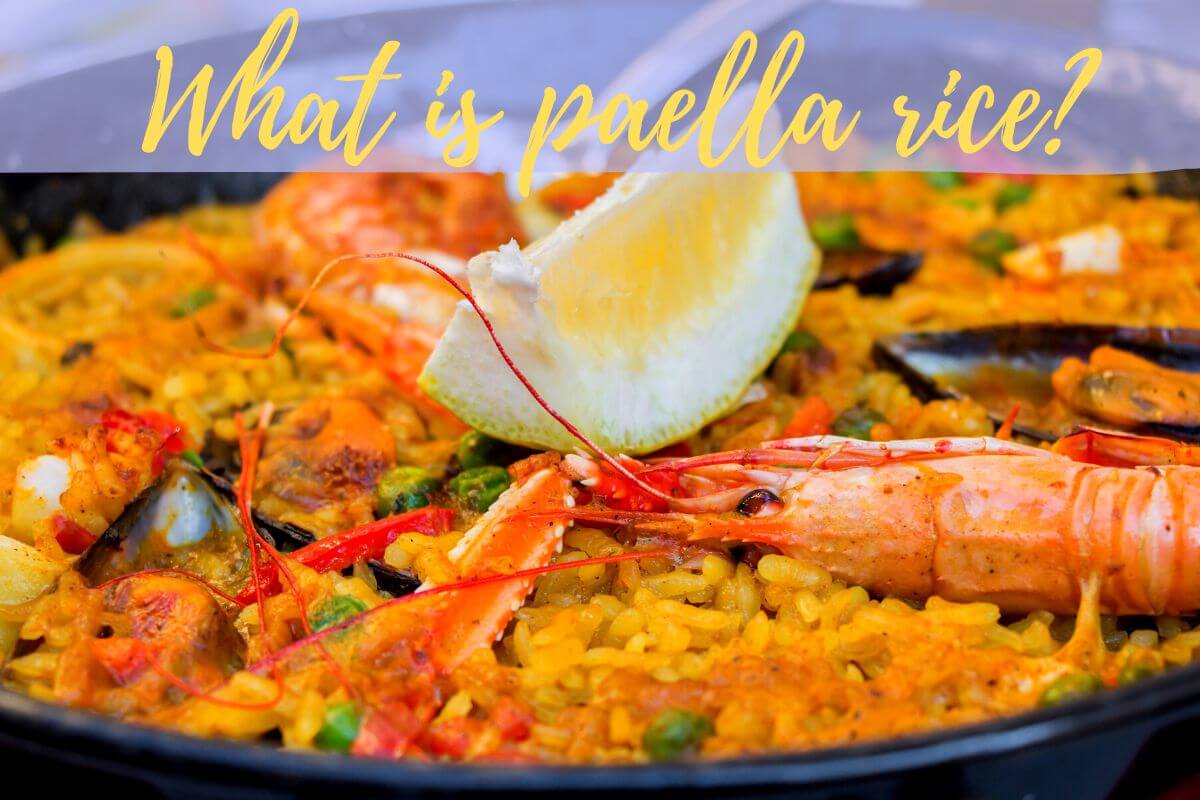Paella rice is an essential ingredient in the classic Spanish dish, paella. While it may seem straightforward, there are several different types of paella rice to choose from that lend themselves well to different recipes.
In this blog post, we’ll dive deeper into understanding what type of paella rice you should use for your favorite recipes, how it differs from other kinds of rice, and which ingredients pair best with paella rice for a successful dish. So grab your olive oil, and let’s get cooking!
What is Paella Rice?
Paella is a rice-based dish that originated in Valencia, Spain, in the mid-19th century. It is a one-pot dish that is typically cooked over an open flame, which helps to give it a unique smoky flavor. The dish is traditionally cooked in a paellera, a flat, wide pan that allows the rice to cook evenly and absorb all the flavors of the other ingredients.
Paella rice is a type of short-grain Spanish rice used to make paella. It’s made from a variety of different grains, including Calasparra, Senia, and Bomba, all of which are grown locally in Spain and impart a unique flavor distinct from other types of rice.
Paella rice is known for its high absorption rate, meaning it soaks up a lot of liquid during cooking. This creates the signature creamy consistency that makes paella a delight.
History of Paella Rice
The history of paella rice is closely intertwined with the history of paella itself. The dish was first developed in the mid-19th century in Valencia, which was then an agricultural region. The dish was initially made with whatever ingredients were available, but over time, it evolved into a more refined dish that was made with a specific type of rice.
The first paella rice was cultivated in the Albufera region of Valencia, where the unique soil and climate conditions helped to produce a rice that was perfect for paella.
Find out: Stop Wasting Spaghetti: How Much Spaghetti Per Person?
Types of Paella Rice
There are four main types of paella rice: bomba, Senia, Bahia, and Calasparra.
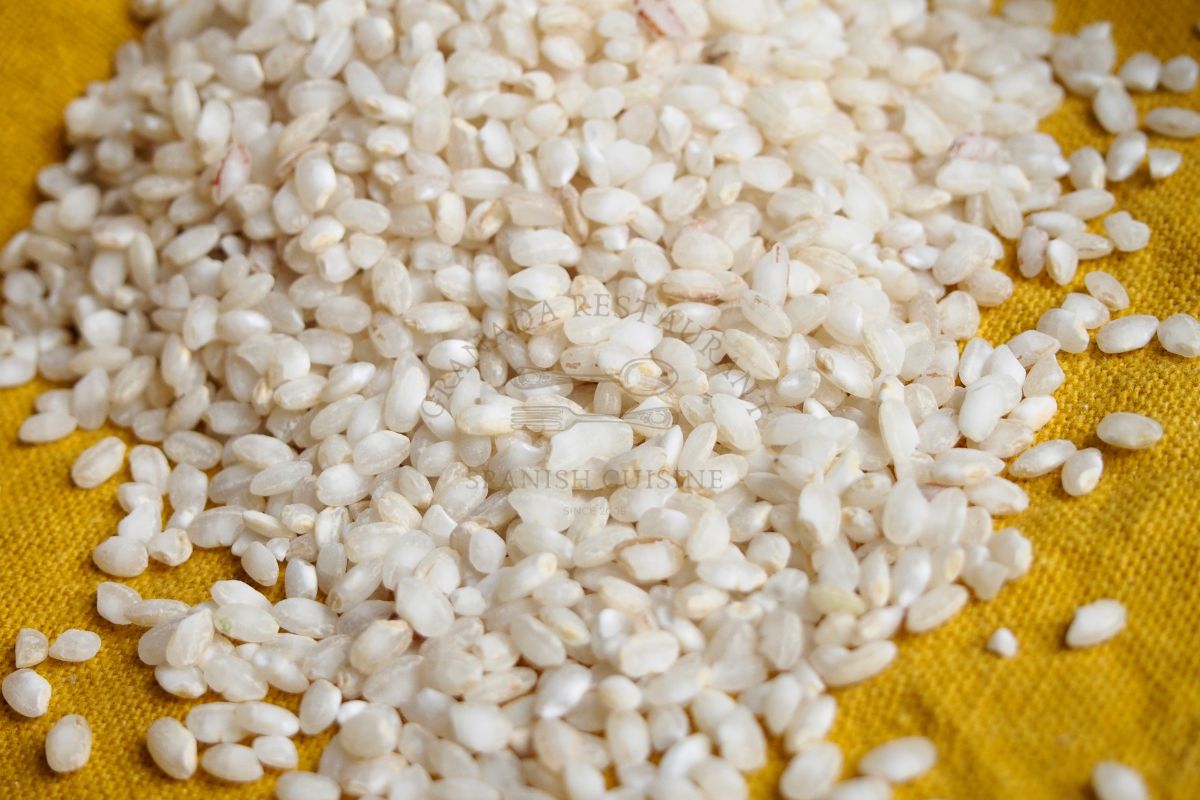
Bomba
Bomba, also known as Valencia Rice, is the most commonly used rice for paella. It has an extremely high absorption rate, making it ideal for creating creamy, fluffy paella. Bomba rice is considered the best rice for paella as it can absorb a lot of liquid without losing shape. This makes it perfect for dishes that require a lot of broth, such as seafood paella.
Senia
This is another popular choice for paella and is known for its ability to absorb flavors well. Senia is a medium-grain rice with less absorption rate than bomba and is often combined with other grains to give the paella more texture.
Bahia
Bahia is a long-grain rice with a lower absorption rate than bomba, making it perfect for paella dishes that don’t need as much liquid. On the other hand, Bahia rice is a newer variety of rice that is gaining popularity among chefs.
Calasparra
Finally, Calasparra is a type of paella rice that is grown in the region of Murcia, Spain. It has a low absorption rate and is often mixed with other types of grains to give the paella more texture.
How Does Paella Rice Differ from Other Types of Rice?
Paella rice has short grains that remain firm and intact once cooked, even if it’s exposed to high temperatures.
It’s also known for its high absorption rate — a quality that helps it soak up all the flavors from other ingredients in the dish. You don’t get this when cooking with Jasmine or Basmati rice, for example, which are known to have a fluffier consistency.
Pros and cons of paella rice
Paella rice can be found in many grocery stores, and some specialty stores may even carry authentic Spanish paella rice. Here are some pros and cons of using paella rice:
Pros:
- Unique flavor: Paella rice has a unique flavor from saffron and other spices used in the dish. This flavor is hard to replicate with other types of rice.
- Easy to make: Paella rice is easy to prepare, and the dish can be made in large quantities, making it perfect for entertaining.
- Nutritious: Paella rice contains various nutrients, including carbohydrates, protein, and fiber. It is also low in fat.
- Versatile: Paella rice can be used in a variety of dishes, not just paella. It can be used in soups, stews, and other rice-based dishes.
- Gluten-free: Paella rice is naturally gluten-free, making it a great choice for those with celiac disease or gluten intolerance.
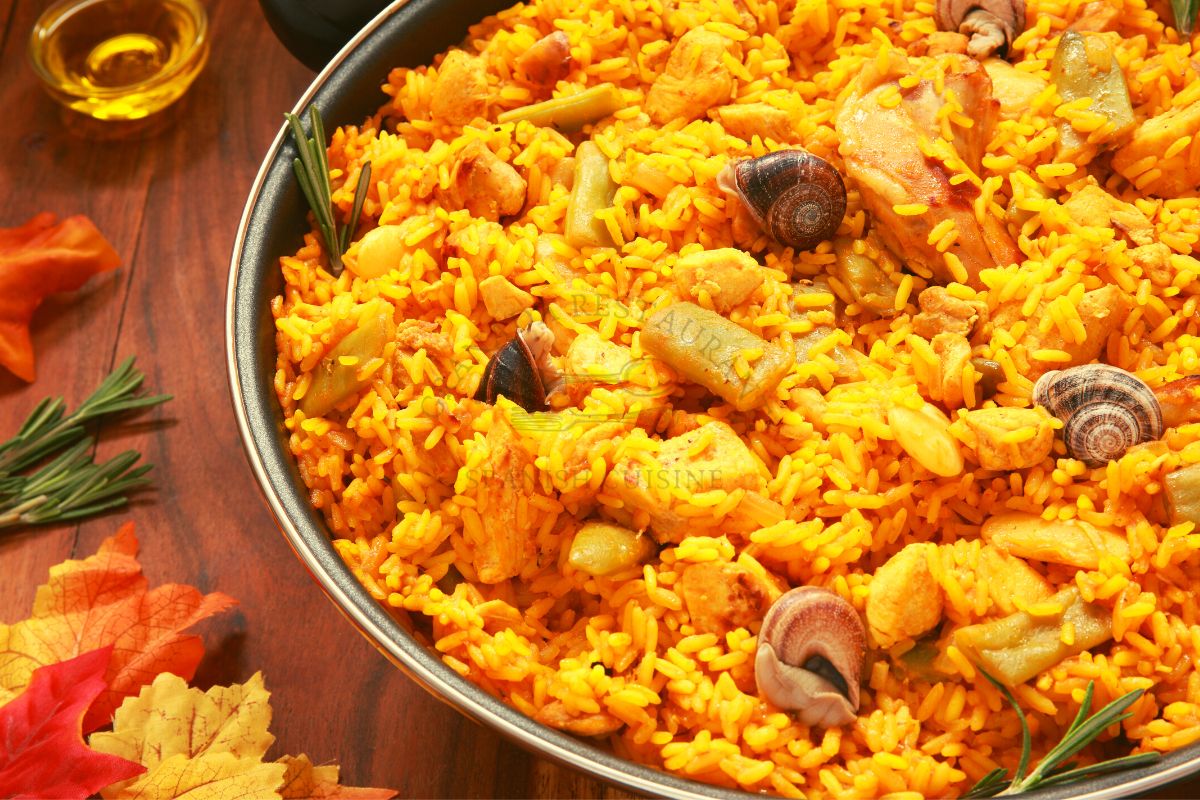
Cons:
- Price: Paella rice can be more expensive than other types of rice, particularly if you are buying authentic Spanish paella rice.
- Availability: Depending on where you live, it may be difficult to find paella rice in your local grocery store.
- Time-consuming: While paella rice is easy to prepare, making the dish can be time-consuming, particularly if you cook for a large group.
- High in carbohydrates: While paella rice is nutritious, it is high in carbohydrates, which may not be suitable for those on a low-carb diet.
- May not be suitable for picky eaters: Some people may not enjoy the unique flavor of paella rice, particularly if they are used to plain white rice.
What Ingredients Pair Best with Paella Rice?
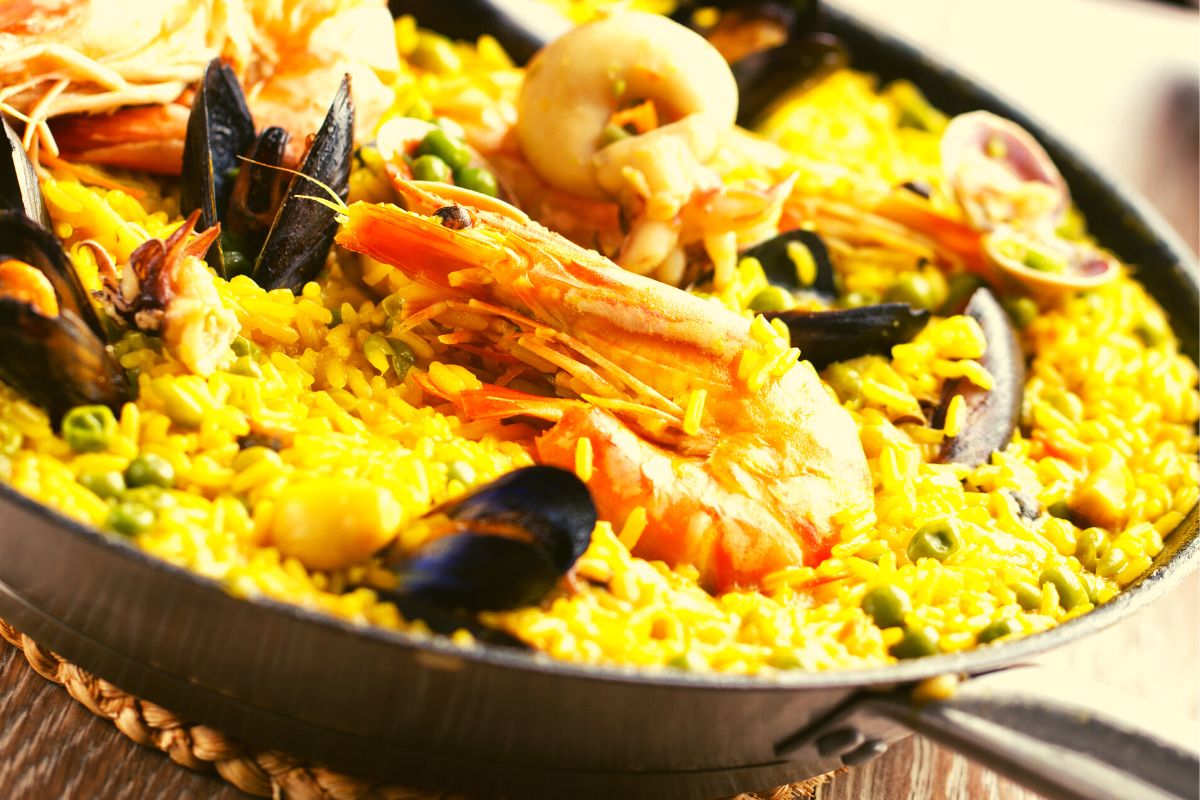
When cooking with paella rice, it’s important to choose ingredients that will absorb the flavor of the grains and create an overall creamy texture.
Common ingredients used in paella recipes include tomatoes, bell peppers, garlic, onions, chorizo, mussels, and shrimp.
Read More: Get a Taste of Spain: The Authentic Flavors of Tapas Bars
However, you can also experiment with other ingredients such as mushrooms, peas, artichokes, or even seafood like lobster for a more decadent dish.
How to Cook Paella Rice
Items needed: A wide, flat, and shallow pan
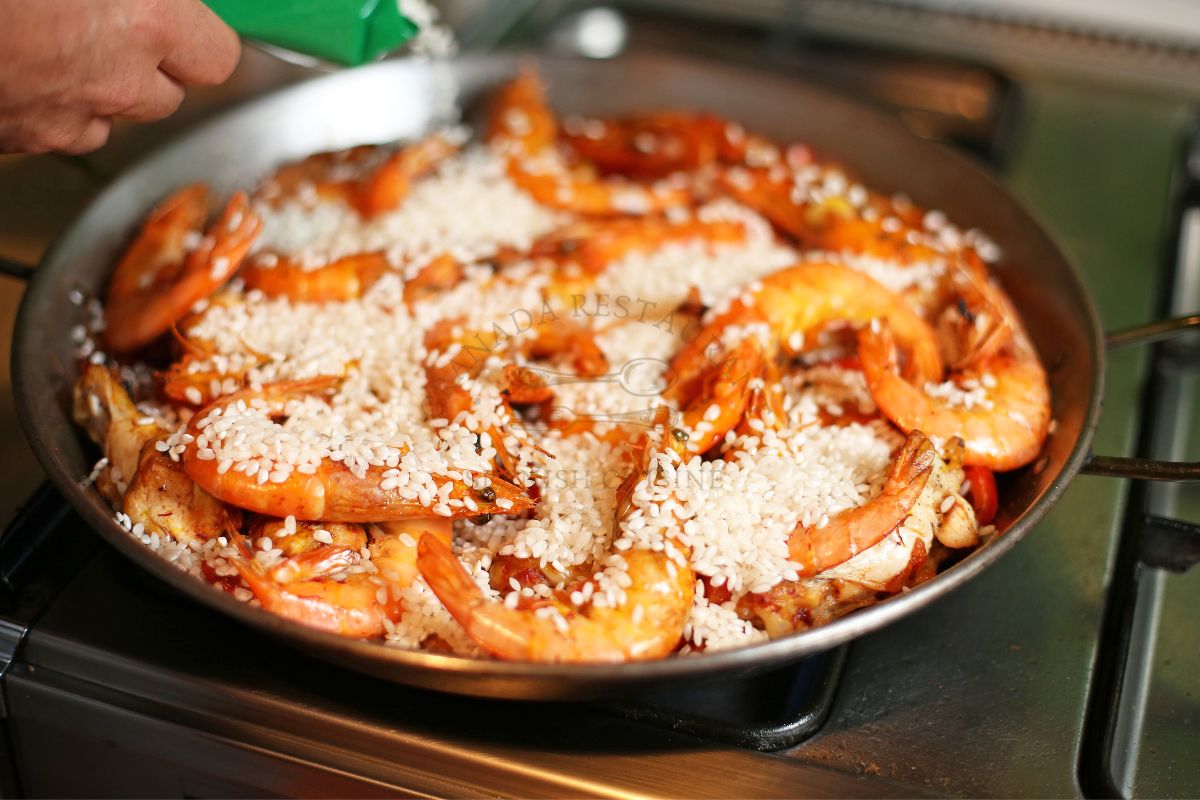
With paella, it’s all about the pan. A wide, flat, and shallow cooking vessel is a must to ensure your finest results.
This kind of pan helps you cook an evenly distributed thin layer of rice for optimum texture with plenty of evaporation when necessary. Plus, you’ll get that unmistakable socarrat on the bottom, indispensable for achieving classic flavor in this Spanish delicacy.
You will also need the ingredients you want to include in your paella dish, such as vegetables and seafood (or any other proteins).
The traditional way
When it comes to making paella, the most important step is choosing the right type of rice. Once you’ve chosen your rice, there are a few steps you should take in order to make sure you get the best possible results.
Step-by-step instructions:
1. Soak your rice: Before cooking, soak your paella rice for at least 30 minutes in cold water. This will help the grains absorb moisture and ensure they cook evenly.
2. Sauté the ingredients: Start by sautéing your vegetables and other ingredients in olive oil before adding the rice to the pan. This will give them a nice caramelized flavor.
3. Add broth: Add your broth or stock once the vegetables are cooked and bring it to a boil.
4. Simmer the rice: Reduce the heat and let the mixture simmer for about 20 minutes until the rice has absorbed all of the liquid. Stir occasionally to prevent sticking.
5. Finish with flavor: Add saffron, paprika, garlic, and other spices to finish off the dish.
6. Let it rest: Finally, let the paella sit for 10 minutes before serving. This will allow the flavors to develop and, most importantly, give the rice time to absorb all of the delicious juices!
The easy way
If you don’t have the time or patience to cook paella from scratch, plenty of convenient options are available. You can find pre-cooked paella rice in a variety of flavors at your local grocery store. You only need to heat it up according to the package instructions and serve!
How to tell when paella rice is done?
To tell if your paella rice is done, check the texture of a few grains by biting into them.
- Paella rice should be tender yet slightly firm to the bite or al dente.
- If it’s too hard, it may need a few more minutes of cooking.
- If it’s mushy and overly soft, it means you’ve overcooked the rice.
- If there is still liquid in the pan when you take it off the heat, use a spoon to test the texture of some grains before serving.
Once your paella rice is done, let it sit for 10 minutes before serving. This will allow the flavors to develop and, most importantly, give the rice time to absorb all of the delicious juices.
Some tips for cooking paella rice
- Use a wide pan or skillet: Paella rice requires a large, flat surface in order to cook evenly. A good paella pan will ensure you get the perfect texture every time.
- Don’t forget the spices: Adding saffron, paprika, and other spices is key to getting the authentic flavor of paella.
- Don’t overcook: Paella rice should be cooked until it is just al dente or slightly firm to the bite. It will become mushy and lose its texture if you let it cook too long.
- Let it rest: Allow your paella to sit for 10 minutes before serving to let the flavors develop.
What Dishes Can You Make with Paella Rice?
Paella rice makes a great base for many dishes. Here are some classic recipes that use paella rice:
1. Traditional Paella: The classic Spanish dish incorporating seafood, meats, vegetables, and beans all cooked in one pan.
2. Arroz con Pollo: A Spanish chicken and rice dish with olives, peas, and spices.
3. Paella Salad: A light and refreshing salad that uses cooked paella rice with vegetables, herbs, and a citrus dressing.
4. Fried Rice: Jazz up your regular fried rice dish by using paella rice instead of white or brown rice!
5. Risotto-Style Paella: Make a creamy risotto using paella rice and your favorite vegetables or proteins.
How Do You Store Paella Rice?
When stored properly, paella rice can last for several months in your pantry.
Keep the cooked rice in an airtight container or resealable plastic bag and store it in a cool, dry place. Make sure to use it up within 1-2 days if you plan on eating it cold and within 3-4 days if you plan on reheating it.
For long-term storage, you can freeze cooked paella rice for up to 6 months. Simply place it in a freezer-safe container and defrost it when ready to use.
Paella rice can also be stored uncooked in an airtight container or resealable plastic bag in your pantry for about 6 months.
Check out this video on Paella Valenciana: The Secrets Behind Spain’s Most Famous Dish
Frequent Asked Questions
#1 Is paella rice gluten free?
Yes, paella rice is gluten-free and can be enjoyed by those with celiac disease or gluten sensitivities.
#2 How much liquid do I need to add when cooking paella rice?
When cooking paella rice, you typically want to use a ratio of 2:1 of liquid (broth, water, or a combination of both) to dry rice. For example, if you are cooking 1 cup of paella rice, use 2 cups of liquid.
#3 What is the best type of paella rice?
The best type of paella rice depends on your preferences and budget. The most traditional varieties are Bomba and Calasparra, which are both short-grain and absorb a lot of liquid.
For a more economical option, try Arborio or Valencia rice. They are medium-grain varieties that can still be used to make paella but have a slightly different texture than traditional ones.
#4 Is paella rice short grain?
Yes, paella rice is traditionally short grain. Short grain varieties are more absorbent than long grain, giving the dish a creamy texture when cooked.
#5 Is paella rice sticky?
Yes, paella rice is often sticky when cooked. This is due to the starch released from the rice when it cooks, which helps to thicken the liquid and bind everything together. Sticky paella rice can be a great indicator that your dish is done!
#6 What are paella rice substitutes?
If you are unable to find paella rice, you can substitute it with other types of short-grain or medium-grain rices.
Arborio and Valencia rice are good substitutes for paella rice and will give a similar texture when cooked.
If you are looking for a gluten free alternative, try basmati or jasmine rice instead.
#7 What rice to use for paella in Australia?
In Australia, Bomba and Calasparra are the preferred paella rices. These short-grain varieties absorb a lot of liquid and create a creamy texture when cooked. You can also use Arborio or Valencia rice for a more economical option.
—
Paella rice is a delicious and versatile ingredient that can be used to make a variety of dishes. When cooking paella rice, it’s important not to overcook it so that it maintains its texture and absorbs all of the flavors from the dish. You can easily make classic Spanish recipes or even jazz up your regular fried rice with paella rice with a few tips. Make sure to store it properly in an airtight container and enjoy it within a few days for the best results!
Bonus Tip: For added flavor, you can use fish or vegetable stock instead of water when cooking the paella rice!
Buen provecho!
Further Reading:

I am Benjamin Nunez, and I love Spanish food, Italian food, and seafood. I have worked in kitchens all my life. I started as a dishwasher when I was just a teenager, and worked my way up to being a head chef.
I specialize in Spanish cuisine, but I can make any kind of Italian or seafood dish you want. My kitchen is always open! Website: https://granadarestaurant.com/

